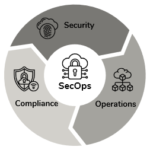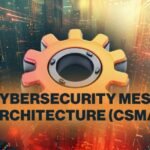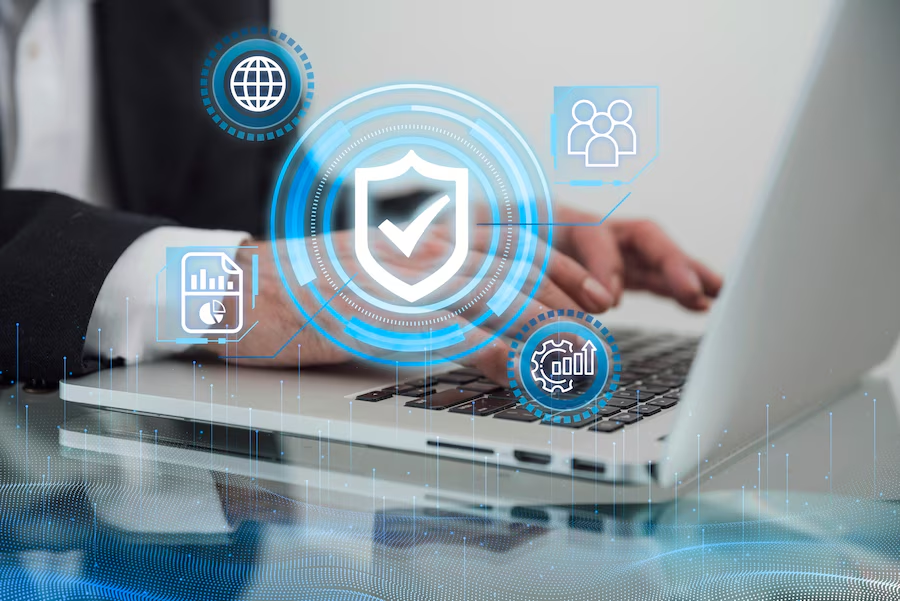
Three Steps to Build a Robust SecOps Strategy
March 17, 2025
Strategies for Implementing Cybersecurity Mesh Architecture (CSMA)
March 17, 2025Understanding Enterprise Risk Management
Enterprise Risk Management (ERM) is a structured and continuous process aimed at identifying, assessing, managing, and monitoring risks that could potentially hinder an organization’s ability to achieve its objectives. As the complexities of global business environments increase, the importance of a robust ERM framework becomes evident. Organizations today face a myriad of risks, including operational, financial, strategic, and compliance risks. The integration of ERM into business strategy is essential for navigating these uncertainties effectively.
Operational risks arise from internal processes, systems, or human factors, potentially leading to disruptions in service or product delivery. Financial risks encompass the potential losses resulting from market fluctuations, credit exposures, or funding challenges. In contrast, strategic risks pertain to uncertainties surrounding the organization’s overall direction and decisions that could affect its competitive positioning. Compliance risks are associated with the necessity to adhere to laws, regulations, and policies relevant to the industry, which, if not managed properly, can lead to legal challenges and reputational damage.
An effective ERM framework consists of several critical components: risk identification, risk assessment, risk response, risk monitoring, and communication. The identification phase involves recognizing potential risks and their sources. Following this, risk assessment evaluates the likelihood and impact of identified risks. Risk response strategies are developed to mitigate or accept these risks based on their assessed levels of severity. Continuous monitoring ensures that the risk landscape is ever-evolving, providing organizations with the tools needed to adapt their strategies as necessary. Lastly, robust communication across all levels is paramount to ensure that risk management is ingrained within the corporate culture.
In summary, adopting an effective Enterprise Risk Management framework can significantly enhance an organization’s resilience to risks while ensuring alignment with its strategic objectives. As such, every organization, regardless of size or industry, should prioritize the implementation of ERM practices to safeguard its future.
Key Challenges in Implementing Enterprise Risk Management
Implementing Enterprise Risk Management (ERM) systems within organizations presents various challenges that can impede their effectiveness. One of the most significant obstacles is resistance to change. Employees and management may be accustomed to existing processes and hesitant to adopt new methodologies. This resistance can stem from fear of the unknown, a perceived loss of control, or simply a reluctance to deviate from established routines. Overcoming this inertia requires comprehensive change management strategies and strong leadership to foster an adaptive culture.
Another prevalent challenge is a lack of awareness about the importance and benefits of ERM. Many organizations fail to grasp how robust risk management practices contribute to their overall success and sustainability. This insufficient understanding can lead to inadequate prioritization, often resulting in minimal investment in necessary resources. Without a commitment to sufficient training, education, and development, staff members may not fully grasp the concept of risk management, hindering the implementation process.
Additionally, organizations often grapple with allocating adequate resources to the ERM program. Limited budgets may restrict hiring qualified personnel or investing in sophisticated risk management tools and technologies, which are essential for effective monitoring and mitigation of risks. This lack of resources leads to an incomplete or inefficient risk management strategy, ultimately undermining organizational resilience.
Furthermore, difficulties in quantifying risk are another substantial barrier. Organizations may lack the necessary methodologies, data, or analytical tools to accurately assess and prioritize risks. This challenge can vary significantly across organizations, driven by disparities in risk culture. Companies with a weak risk culture may overlook critical risks, while those with a strong emphasis on risk awareness might excel in their ERM practices. Real-world examples indicate that these variations can considerably influence how effectively ERM is executed, showing the necessity of aligning organizational culture with risk management objectives.
Solutions and Best Practices for Effective ERM
To navigate the complexities of Enterprise Risk Management (ERM), organizations must adopt effective solutions and best practices that align with their unique needs. One of the foundational strategies is fostering a robust risk culture. This involves instilling a mindset throughout the organization that emphasizes the importance of risk awareness and proactive management. Leadership must exemplify this culture by openly discussing risk-related issues and encouraging team members to identify and report risks without fear of retribution.
Utilizing advanced risk assessment tools also plays a critical role in enhancing ERM practices. These tools help in identifying potential risks, quantifying their potential impact, and determining appropriate risk mitigation measures. Organizations should invest in specialized software that can provide real-time analysis and reporting, which helps in making informed decisions swiftly. Additionally, engaging stakeholders from various levels of the organization is essential in developing a comprehensive understanding of possible risks. Involving employees from different departments ensures diverse perspectives, thereby leading to more robust risk management strategies.
Incorporating technology into the ERM framework can further streamline data management and improve information flow. By leveraging big data analytics, organizations can identify trends and patterns in risk behavior, allowing them to respond proactively to emerging threats. Continuous monitoring and improvement of the ERM process should be prioritized to keep pace with the evolving risk landscape. Regular reviews and audits of the ERM strategies ensure that they remain relevant and effective.
Moreover, the roles of leadership and governance are crucial in establishing and maintaining a successful ERM framework. Strong governance structures ensure accountability and alignment with business objectives, reinforcing the importance of risk management across all levels. Case studies of organizations that have successfully implemented these practices demonstrate the positive impacts on risk mitigation and overall performance, showcasing the tangible benefits of a solid ERM approach.
The Future of Enterprise Risk Management
As organizations navigate the complexities of a rapidly changing landscape, the future of Enterprise Risk Management (ERM) is poised for significant transformation. One of the main catalysts for this evolution is the incorporation of emerging technologies, including artificial intelligence (AI), big data analytics, and cloud computing. These technologies are not only enhancing the capability to identify and evaluate risks but also enabling organizations to respond to these risks more effectively. For instance, AI can automate data analysis, allowing companies to detect patterns and anomalies that human analysts might overlook. This capability is particularly valuable in a world where data sources are multiplying exponentially.
Big data, in conjunction with AI, allows organizations to harness vast amounts of information to inform decision-making processes. With advanced analytics, companies can predict trends and assess their risk exposure in real-time, ultimately leading to more informed strategic planning. Additionally, cloud computing offers scalable solutions for storage and data management, promoting accessibility and collaboration across different units within an organization. This level of integration is crucial for organizations striving to foster a proactive risk management culture.
Alongside technological advancement, the regulatory environment surrounding ERM continues to evolve. Organizations must remain vigilant and adaptable to new compliance requirements that may arise in response to global events and economic shifts. This dynamic regulatory landscape necessitates organizations to not only ensure compliance but also to view regulatory changes as opportunities to strengthen their risk management framework.
In light of these trends, organizations that prioritize agility and technology integration are likely to thrive in the next five to ten years. By embracing a culture of proactive risk management, they can effectively mitigate emerging risks, positioning themselves favorably in an unpredictable environment. The integration of technology, regulatory adaptability, and a strong risk culture will define the future of ERM, allowing organizations to seize opportunities while managing potential threats.




